In the wake of Michael Jackson’s recent sudden death, there has been a predictable spike in pictures, radio and videos runs, articles and blog posts about the star. We often have the tendency to think of style icons as Athena: “born,†emerging from Zeus’s head swathed in what was to be her trademark ensemble of full armor. This theory has been confirmed by the fact that most fashion discussion I’ve found has focused on Jackson’s “iconic style†with parades of comparative photos of current celebrities wearing military-style coats, red leather jackets, mono-gloves, aviator shades, etc. — all of which is appropriate testament to his talent and breadth of influence — and yet there has been very little discussion on what influenced the man himself. At the risk of stating the obvious, none of us live in vacuums — not even the rich and famous — and as is my wont, I’m far more interested in the idol’s own historical sartorial references, which he so successfully appropriated and interpreted that most people see him as a completely original trend setter.
CLASSIC MOVIES & MUSICALS
Though I favor his work in the Jackson 5 (I know there are many dissenters, but I do so love Motown!), considering his youth and the parental/managerial influence present during those early years, I will concentrate mainly on his mid-to-late career, after he had emerged as a solo artist. I’ll start then with his movie debut at age 20 as the Scarecrow alongside Diana Ross’s Dorothy in The Wiz (1978), remake of the classic The Wizard of Oz (1939), which introduced him to the wonderful world of classic movies. I’m not the first to see how those suave, glittery MGM musicals manifested themselves both in Jackson’s dancing and wardrobe.
Jackson regularly sported white suits (see Thriller album cover for a casual, pared down version) with matching fedoras bearing uncanny resemblance to the ensemble Fred Astaire wears with Cyd Charisse in The Band Wagon (1953). For those unfamiliar with that mediocre musical (for which I have an inexplicable tenderness), “The Girl Hunt Ballet†dance number is a musical-within-a-musical where Astaire and Charisse enact a ’40s film noir-style murder mystery:
Here’s Michael’s version from the “Smooth Criminal” video:
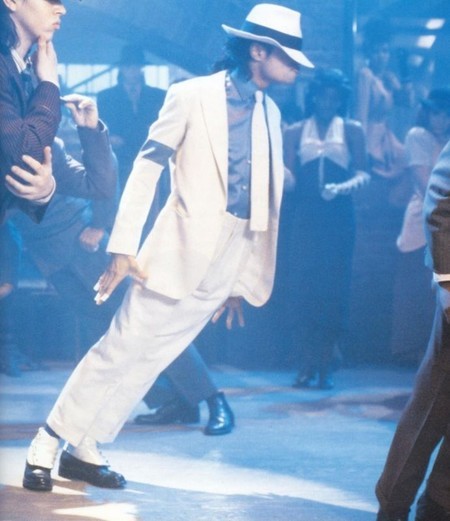
Michael Jackson in Smooth Criminal, wearing white suit with spats and fedora. And isn’t the 45 degree lean dance move a more graceful version of the Tin Man’s move from the original Wizard of Oz?
Even the alternate, more informal versions of Jackson’s look consisting of black slacks, white tank top, unbuttoned white undershirt and fedora may very well have been a deconstructed vestmental homage to Astaire, one of the most formal of the musical men in film. (I admit I may be reading just a wee bit too much into this one, but isn’t the game fun?)
And West Side Story (1961) undoubtedly influenced both the “Beat It†(1983) and “Bad†(1987) videos, down to the line dance choreography style. Jackson’s videos have only slightly less dubiously threatening song-and-dance gang confrontations. “Bad†even mimics the set of West Side Story‘s “Cool†number, which also occurs in a garage, moments after the Jets’ gang leader (Riff) is killed by the rival gang in a scuffle:
“Bad†video:
“Beat It†video:
Michael’s signature ankle-bearing pants paired with penny loafers and white socks highlighted his dance moves, it’s true. But they also bear telling resemblance to another famous song-and-dance movie star, Gene Kelly.
Though not a movie star, the undeniable live concert showman James Brown was explicitly credited by Michael as being hugely influential. They share a talent for energetic performances, impressive tonal ranges (not many can hit those upper registers like these two!), and love of shiny jackets and straightened hairstyles.
Jackson and Brown performing at the 2003 BET Awards in Los Angeles:
There was also a healthy dose of Elvis inspiration evident in Jackson, what with his penchant for gold lame and gyrating crotch moves. In an interesting (some might say disturbing) twist, Jackson actually married Presley’s daughter Lisa Marie, thus tapping into his idol’s bloodline while possibly attempting to silence gay / sexual deviant rumors (the molestation trial was a mere year before the short-lived marriage).
THE DARK MISFIT
Thus far I’ve concentrated on Michael’s fondness for classic cinema and musicals, but there were most definitely darker influences as well. His leather-and-buckle style emerged perhaps as Michael struggled with his life of imposed near-solitude and the battle for privacy he fought from the media and crazed fans. He seemed to identify with, and then project, a kind of misunderstood misfit persona, even while continuing grueling tours and recording sessions. April’s auction of Jackson’s ephemera included many of his home furnishings, sculptures, children’s race cars, and many many spangly clothes, but what caught my special notice were the Edward Scissorhands (1990) prop hands.
It turns out that Jackson had aggressively lobbied for title part in Tim Burton’s movie, and I’ve since realized this interest makes perfect sense. He was dressing like Edward Scissorhands before the movie was even made, with his wan skin tone, limp black hair, and ladders of leather straps and buckles. His penchant for these leather buckles was perhaps indicative of deeper, darker insecurities; desire for restraint in others and to be restrained oneself. They call to mind mental patients’ restraints and also S&M gear, as was fitting for a man whose mental stability and sexuality were examined and questioned throughout his career.
Jackson’s interpretations:
MILITARY / ROYALTY
The other side of the shy, misunderstood outsider was Jackson’s royal persona. His astounding collection of military jackets are protective in their stiffness, and project masculine virility and power with their broad shoulders (which temporarily mask Jackson’s narrow frame), and suggestion of violent battle. They are also commonly worn by male monarchs (who typically rely on medals rather than Jackson’s rhinestones for bling). Jackson was dubbed the “King of Pop†because of his extraordinary talent, but he shared other, less desirable similarities with kings. Like any monarch, his movement was confined to his personal properties and heavily guarded mobbed public appearances, which was undoubtedly trying. And since he achieved such fame at such a young age, like any prince or king, he had virtually no opportunity for normal, unfettered geographic exploration, and he alternately embraced this gift/curse — as in his royal military ensembles — and fought against it — as in his more threatening, soldier-based military ensembles.
Prince Charles:
Some of Jackson’s military jackets were rather conservative, approximating their official prototypes, but many more were colorful, glitzy, and laden with sparkles. It’s no coincidence that Jackson was a huge admirer of earlier pop royalty the Beatles (he procured the publishing rights to that influential band’s songbook) whose influential album Sgt. Pepper’s Lonely Hearts Club Band (1967) portrayed the Beatles in silly psychedelic ’60s military gear, and Michael’s interpretations:
The flamboyant “King of Pop” in his royal jacket, complete with golden sash and epaulets, with presidential royalty the Reagans in conservative suits:
SEXUALITY / GENDER
As many rock stars do, Jackson walked a tightrope between hyper-masculinity and femininity. Even glossing over the gory details of the Neverland Ranch kiddie porn/molestation fiasco (starting in 1993), I would be remiss to ignore Michael Jackson’s gender and sexuality issues. He never shied from gender ambiguity: on the contrary, he seemed to revel in them. His willowy body, straightened, flowing locks, lack of visible body or facial hair, permanent eyeliner and lipstick, and surgically slenderized jawline all contradicted his signature performative crotch grabs and pelvic thrusts. “In the Closet†(1991) is delightfully questionable in meaning, possibly referring to the unwanted media attention or to his ambiguous sexuality.
Jackson’s peek-a-boo curls emulate classic stars Rita Hayworth, Veronica Lake, and bear eerie resemblance to his close personal friend who happens to be a classic movie star herself, Elizabeth Taylor:
In the “Scream†(1995) video, Michael and sister Janet are dressed in identical outfits that are clearly designed to blur dissimilarities between the siblings, not least of which being their respective genders:
The umbrella Jackson started toting for portable shade blurred gender lines in a more subtle way, plucked from the long line of both Eastern and Western women protecting themselves from the sunlight’s harsh rays by strolling with parasols. Compare to a geisha under a parasol (note the similar white skin and red mouth):
The body suits of the 1990s were generally worn by women, and then underneath pants. Jackson’s body suits worn over his pants, served as inner-as-outwear, much as Madonna used Gautier’s external corset/body suit in her Blond Ambition tour (1990). Though they were a female fashion, Jackson actually uses them to emphasize his crotch (Madonna did as well), both confusing gender lines and emphasizing male ones. Finally (but less interesting), the body suit has practical applications, staying put while the body underneath gyrates and writhes in dance, though I somehow doubt that’s what attracted Michael to them.
Compare Michael in his HIStory tour (1995) to Madonna in Jean-Paul Gautier’s Blond Ambition bustier (1990). (She sometimes wore it over pants like Michael.)
BURLESQUE
Part of what feminized many of Jackson’s ensembles were the sheer numbers of sparkles, lending a burlesque feeling to an otherwise masculine outfit. Much of his wardrobe was designed to remain visible to stadiums of thousands, but even in smaller gatherings and public appearances, the man indulged his penchant for rhinestones. Rhinestone studded and luminescent materials have a rich tradition in the (female dominated) burlesque world, highlighting every curve and suggestive movement for the audience. Again Michael taps into an overtly sexual genre, muddling his presentation of his sexuality.
Compare Dita Von Teese, covergirl of the neo-burlesque movement, as a sexy rhinestone cowboy, to selections from Michael’s bedazzled wardrobe can be found in this slideshow. I mean, the man had bedazzled socks:
Guy Trebay of the New York Times wrote, “More than almost any entertainer in memory, Michael Jackson was entirely of show business, and was seldom out of costume.” His influences were culled from a wide variety of sources, but it’s striking that even as he borrowed heavily from both genders’ beauty standards, a wide timeline of popular fashion and pop culture references, etc., the celebrity influences were primarily caucasian / Eastern. His narrowing facial modifications, relaxed hair and mysterious extreme pallor externalize a complex struggle with race identity (in addition to the feminine associations and gender / sexuality questions they raise).
Many of Michael Jackson’s fashions caught on (the red leather jacket, the single glove is making a comeback on the likes of Biance and Victoria Beckham, etc.), but many more were just so outrageous (silken face masks, male burkas) that they die with the man. One of the amazing aspects of Jackson’s style (and I think this is a typical marker of a fashion icon) is that no matter how outrageous he looked throughout his life, he was consistent in the visual motifs with which he decorated himself, ultimately lending an agelessness to the man — after shedding his afro, he pretty much looked like an indeterminate 20-or-30-something-year-old, did he not? May we all leave such a legacy, fashion, musical, or otherwise.
Further Reading / Viewing:
- Deborah Nadoolman Landis, costume designer of several M.J. videos including Thriller, writes for FrockTalk “Michael Jackson fashion icon“
- Video mashups:
- West Side Story with “Bad†(1987) playing, sampling clips from WSS’s knife fight scene and the “Cool†numbers. (There are many other similar mashups that actually splice Michael Jackson video clips with West Side Story ones.)
- “Puttin’ on the Ritz†with Michael Jackson actually ballroom and tap dancing in white tails and top hat circa 1977 when he was 19.
- Fred Astaire set to Jackson’s “Smooth Criminalâ€
- New York Times slideshow

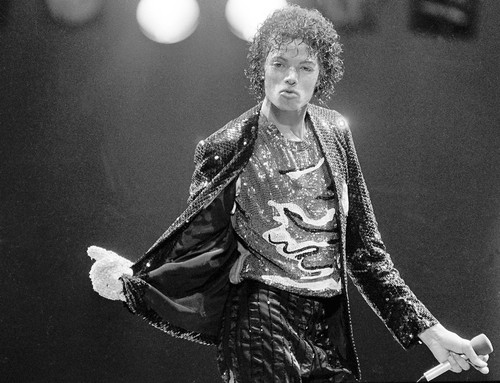
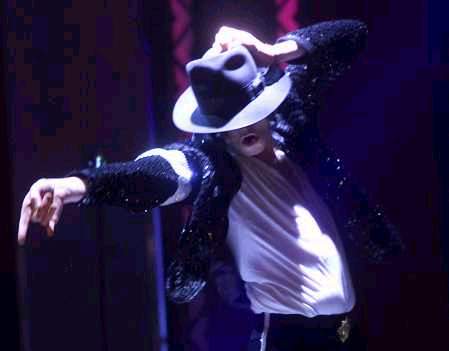
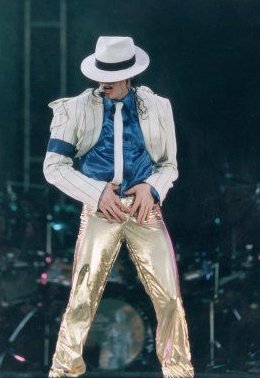
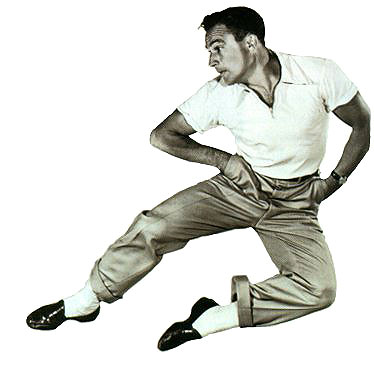
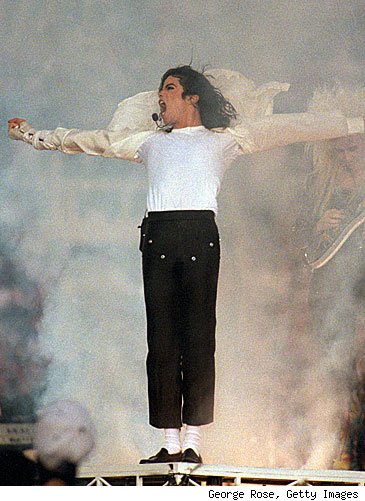
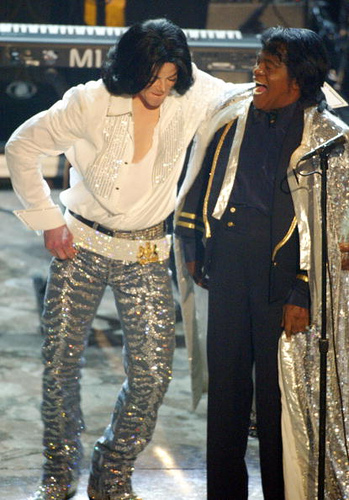
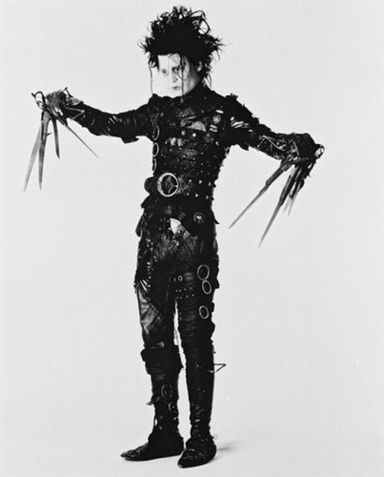
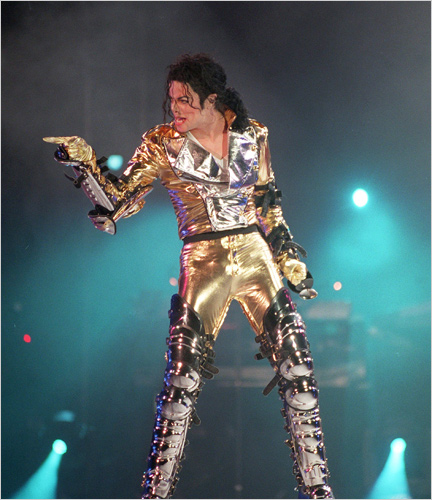
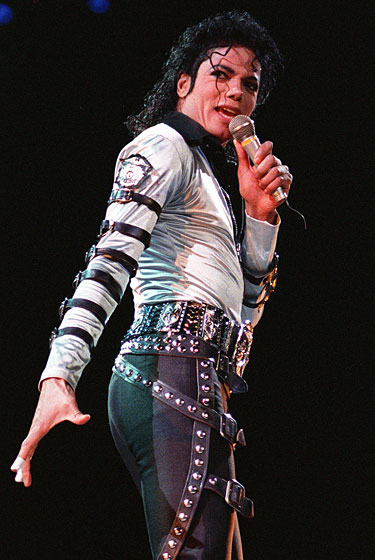
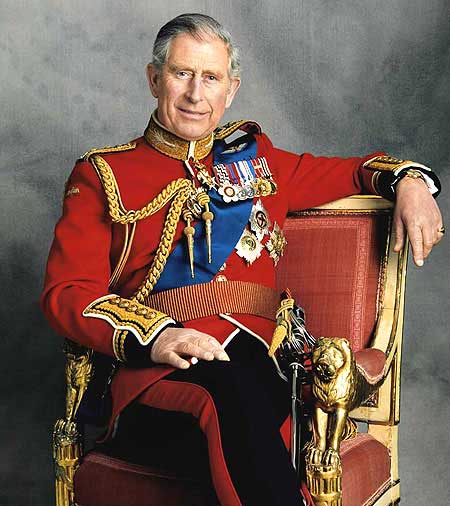
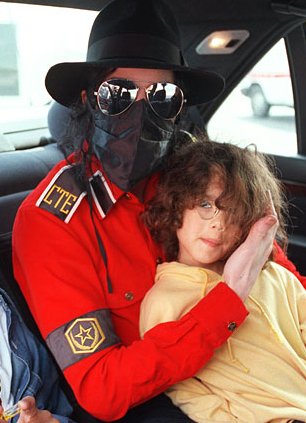

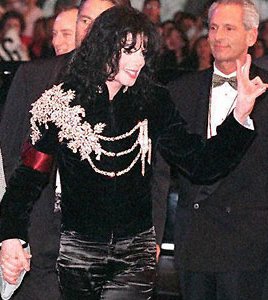
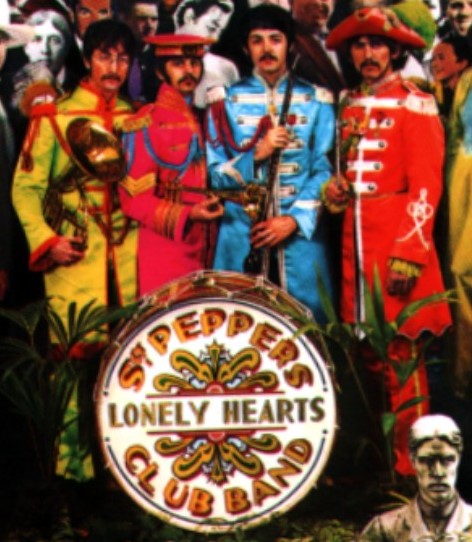
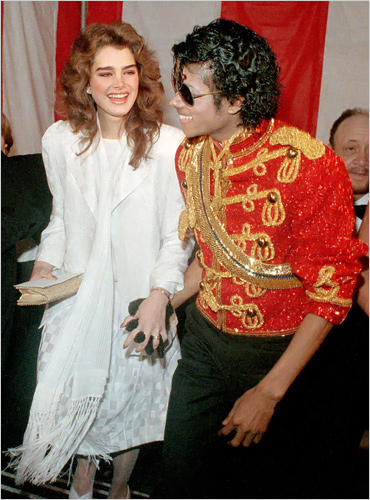
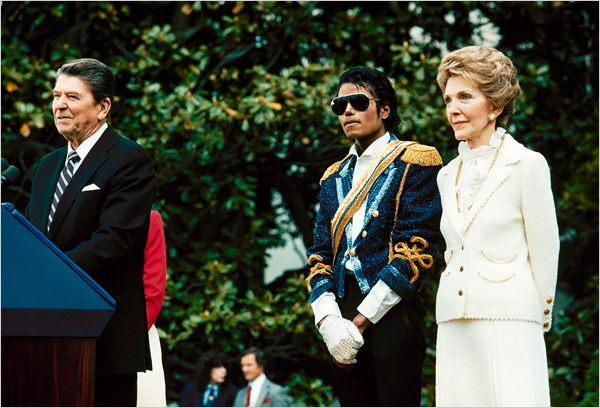
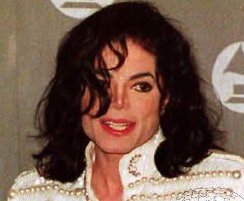
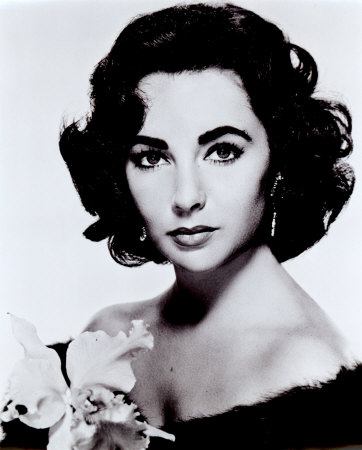
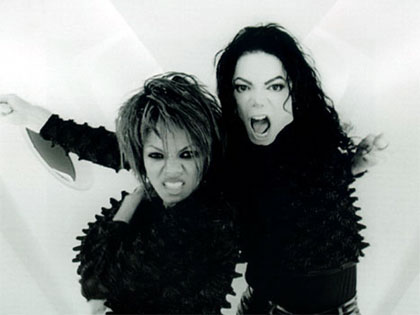
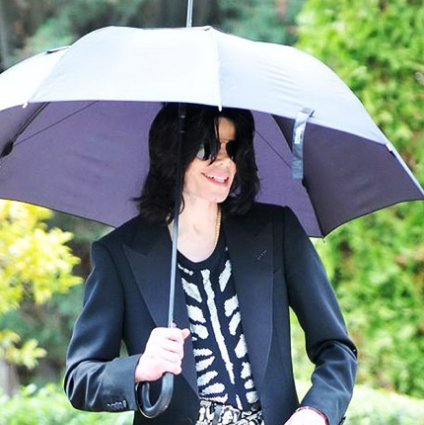
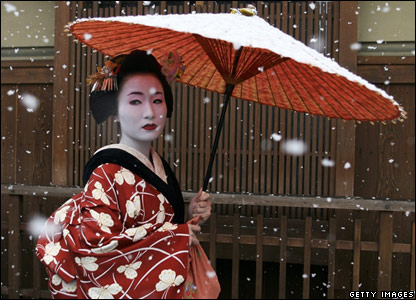
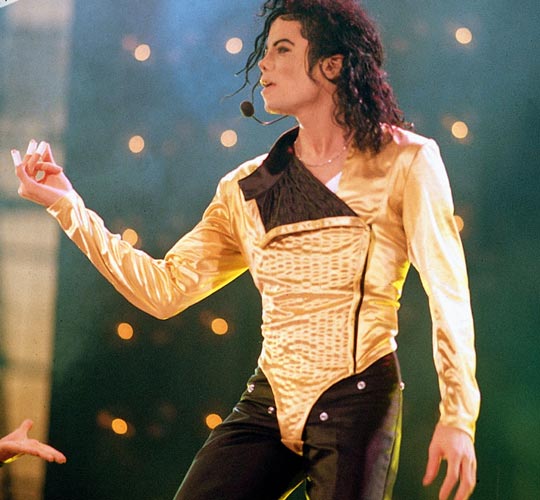
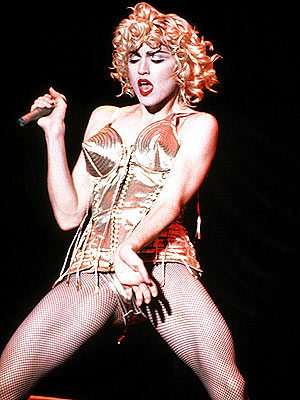
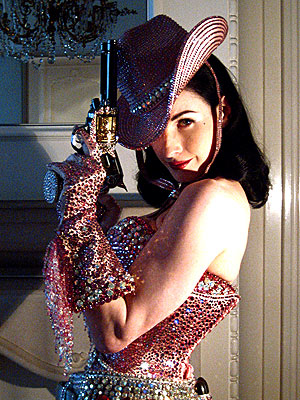
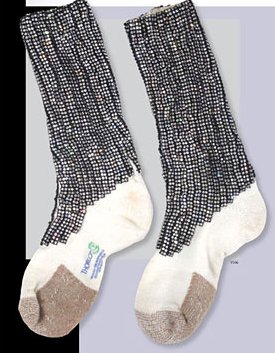
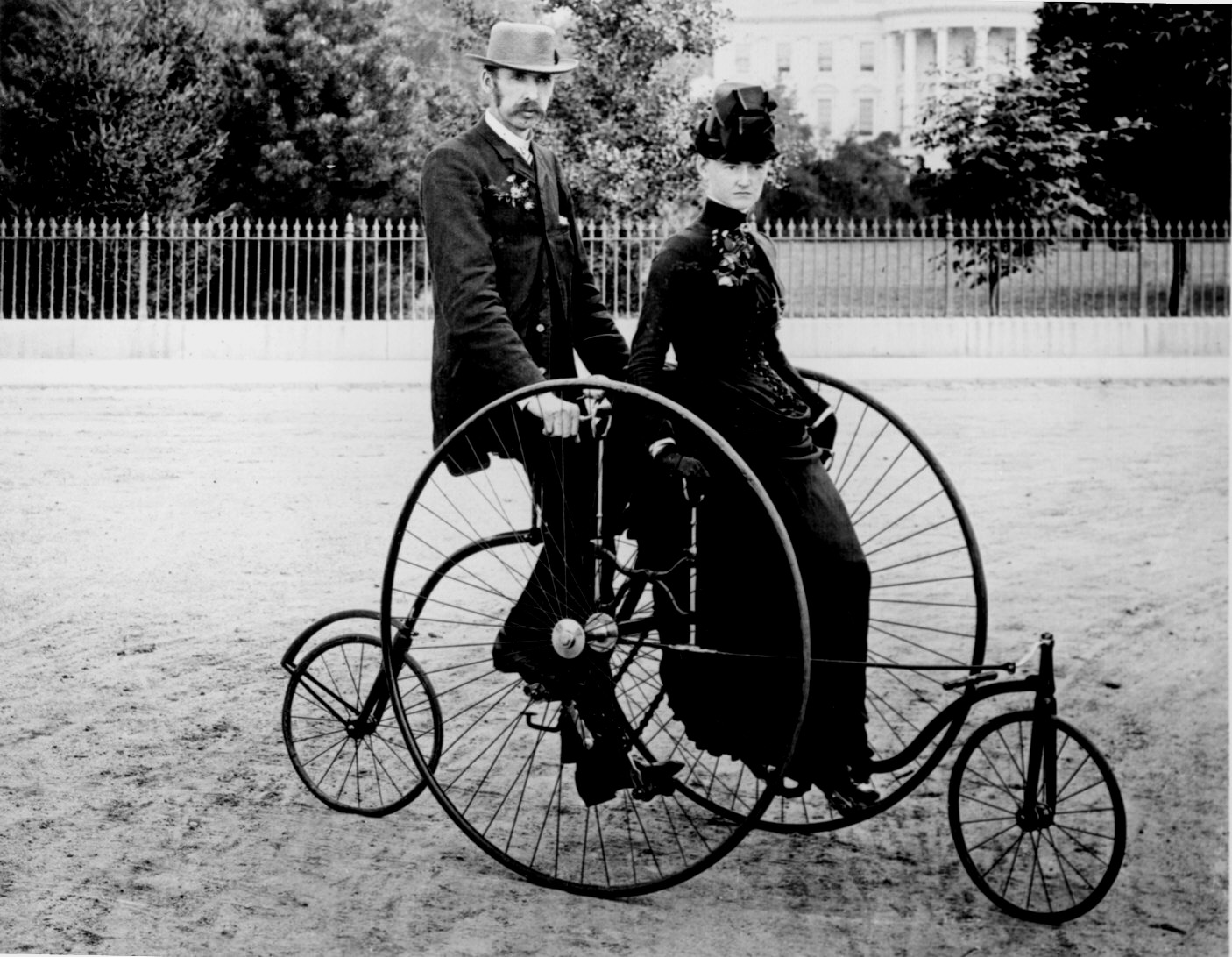

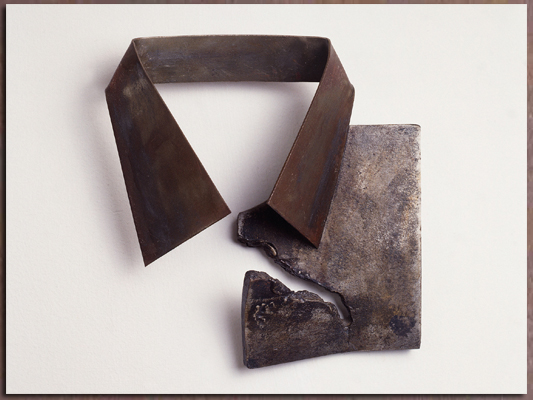

























13 comments
Soleil says:
Apr 27, 2022
Interesting text. But Michael Jackson was allergic to sun, that’s why he used umbrella. Vitiligo causes white patches that are extremely sensitive, so they have to be protected. And leave the man to rest in peace. He had every right to dress however he wanted and to look however he liked, especially because his job was to look bold, extraordinary, and young as well, so don’t judge him. He was the real royalty as well, since he was crowned King of Sanwi, the Kingdom in Africa, The Ivory Coast. Yet, he was so humble and down to earth. To me, he was a modern incarnation of Jesus Christ. Michael Jackson was the Earth Angel. God bless him!
Doris says:
Nov 2, 2018
wow he was 10 -15 years old with everything ahead, King of music, stage and fashion
Tove Hermanson says:
Aug 19, 2013
Jack: In fact I *did* know that Jackson had a skin condition, but the fact remains that many– if not most– people who have vitiligo do not dress in the flamboyant way that Michael did (I see people with vitiligo without parasols and facemasks all the time in NYC). I find it interesting that this point seems to make my entire article “slanted” in your eyes, as though blurring gender lines (which frankly seems ridiculous to challenge in Jackson’s case) is incompatible with also suffering from a medical condition.
On the contrary, I think playing with gendered dressing is visually interesting and even socially admirable to push those boundaries. If anything, it seems you, Jack, are the one who is uncomfortable– nay, angry– at the suggestion that a great musical performer (I totally agree) could possibly challenge concepts of gender normativity.
Jack says:
Aug 19, 2013
The man carried an umbrella around all the time not because he was trying to Blurr gender lines, rather he had a skin disorder that destroyed his pigmentation. Thus making him very susceptible to the sun’s harsh rays. I wouldn’t expect the author of this horribly slanted article to care to find that out. Instead, the author took great care to over analyze every aspect of every single stitch of clothing the late…and the GREAT Michael Joseph Jackson ever wore on his back.
paulo castro says:
Apr 5, 2012
stumbled upon this in my everyday quest for anything michael jackson. couldn’t help but notice you switched the costumes from the dangerous and history tours. the gold lame is from history, and the military jacket with gold ammunition, as well as the gold body suit were from the dangerous tour. other than that, great article! 🙂
para kazanma yolları says:
Aug 7, 2011
“there was a lot more to him as a person than just plastic surgery….he was a gem..that we’ve lost…”
parisbreakfast says:
Dec 29, 2009
Oh I forgot..
in THIS IS IT- the many pointy-shouldered suits from Balmain, who in turn copied MJ’s millitary jackets = reference upon reference.
There is no doubt he was a fashion icon and is still much revered in Paris.
http://parisbreakfasts.blogspot.com/2009/11/galeries-lafayette-noel-2009.html
I love that he borrowed his mum’s Chanel sequin jacket for the Motown ’83 performance!
parisbreakfast says:
Dec 29, 2009
I found this by accident, but you’ve made my day..
As another obsessed MJ fan come late to the party, this fills in many blank spaces.
MJ was certainly keenly aware of his visual appearence both on and off the stage. I love his sillouette references to Marcel Marceau, a friend
http://www.youtube.com/watch?v=VJpBUPlMNU4
The black hat, pants,glove etc. is a nod to Bob Fosse as are many aspects of his dancing style-
http://www.youtube.com/watch?v=QUlEBhGgEe0
The millitary style came directly from Adam Ant, who got a call out of the blue from Jackson for his Saville Row tailor.
The crotch grab – I read he saw James Brown perform sans jock strap and he adopted the gestures…
It’s funny to see Audrey Hepburn dancing in Funny Face with the penny loafers and white socks..
Thanks for this!
Carolg
gayat1 says:
Dec 16, 2009
Wow I love your fashion analysis of MJJ! I always loved his fashion! I love your comparisons to the classic film folk like gene kelly or liz taylor. Michael was very intuitive it seems and he felt right about certain fashions for himself. what about his trucker hats?. He loved them! There are pictures of him in a particular trucker hat that was red and was presented to him by the Marines. Also in “This Is It” we could see how his fashion was changing to a more tailored suit, flowy shirt, glittery tightness. What about His Hotness in the Thriller part of This is It when he moved up to a different level of the stage and had on the Ed Hardy sweats and puffy jacket with his curly ponytail that he brought back as a look? I could just squeal!!! I loved his casual or street fashion check him out in the video with Brett Ratner dancing in the car to R. Kelly. Love your theory of the buckles and restarint!!Love you MJJ. R.I.P This is one of the most erudite posts about MJJ. Keep up the good work!!
vineeta says:
Nov 5, 2009
there was a lot more to him as a person than just plastic surgery….he was a gem..that we’ve lost…
Cautious says:
Sep 6, 2009
He was a very imaginative and creative person, who dared to be different and made it just so. He oozed sexuality and demonstrated it’s power without making you blush. He was charasmatic.
He was a very attractive person without a doubt in my opinion. When he looked good it was strikingly good and this was at all angles.
tee says:
Aug 13, 2009
The single glove (according to actress Cicely Tyson) started out merely as a way of concealing blotches on his skin (early vitiligo) without having to always apply makeup to his hand. But, also for the sake of uniqueness and fashion, MJ said he sported one glove cuz “it’s cool”. The umbrella was cosmetic as well, being that his skin was very sensitive to sunlight.
Lee says:
Jul 31, 2009
Michael Jackson was also a personal friend of Liberace and a definite similarity between some of Jackson’s late 70’s/early 80’s attire parallel the bejewelled splendor of Liberace.